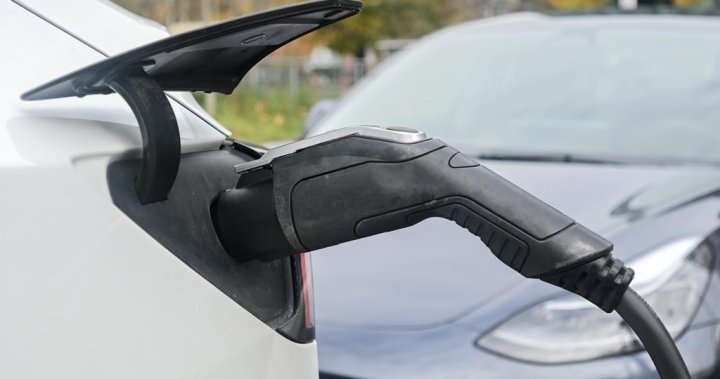The Sudden Halt of Canada’s Electric Vehicle Incentive Program: A Deep Dive
The Canadian government’s ambitious push towards an electrified transportation future has hit a speed bump. The Incentives for Zero-Emission Vehicles (iZEV) program, a cornerstone of the country’s strategy to promote electric vehicle (EV) adoption, has been abruptly paused. The program, which offered rebates of up to $5,000 for purchasing or leasing eligible EVs, reached its funding limit earlier than anticipated, leaving many potential buyers in limbo. This sudden halt raises questions about the program’s sustainability, its impact on the EV market, and the government’s overall strategy to achieve its ambitious emission reduction targets.
The iZEV program, launched in 2019, played a significant role in accelerating EV adoption in Canada. Over its lifespan, the program facilitated the sale or lease of over 546,000 zero-emission vehicles, significantly contributing to the growth of the EV market share from a meager 3.1% in 2019 to a more substantial 11.7% in 2023. This growth trajectory, driven in part by the iZEV incentives, aligns with Canada’s mandated targets of 20% EV market share by 2026 and a complete transition to electric vehicles by 2035. The program’s suspension, however, casts a shadow over the feasibility of achieving these targets, particularly the ambitious 2026 milestone.
The early depletion of the iZEV program’s funds highlights the escalating popularity of EVs and the growing demand for financial incentives to bridge the price gap between electric and conventional vehicles. While Transport Canada’s website cites the exhaustion of allocated funds as the reason for the pause, it underscores the need for a more robust and sustainable funding mechanism to support the continued growth of the EV market. The original program structure, designed to pause either on March 31, 2025, or upon depletion of funds, clearly underestimated the accelerating demand, necessitating a reassessment of future funding strategies.
The pause of the iZEV program creates uncertainty for prospective EV buyers who were relying on the rebate to make their purchase financially viable. This sudden shift could potentially dampen consumer enthusiasm and slow down the momentum of EV adoption. Furthermore, the absence of a clear timeline for the program’s resumption adds to the anxiety and may lead potential buyers to postpone their EV purchase decisions, impacting the overall sales figures and potentially hindering the progress towards the 2026 target. The government needs to address this uncertainty promptly and provide clarity on the future of the incentive program to maintain consumer confidence and sustain the growth of the EV market.
The unexpected suspension of the iZEV program underscores the need for a comprehensive review of Canada’s EV adoption strategy. Beyond simply replenishing the program’s funds, the government needs to consider a more holistic approach that incorporates not only financial incentives but also investments in charging infrastructure, battery production, and public awareness campaigns. A multifaceted approach is crucial to address the various barriers to EV adoption, including range anxiety, charging accessibility, and the initial higher purchase price.
Moving forward, the Canadian government must develop a more sustainable and predictable funding model for the iZEV program or its successor. This includes securing adequate funding to meet the growing demand, establishing a transparent process for allocating funds, and providing clear communication to both consumers and the automotive industry. Furthermore, the government should explore innovative financing mechanisms, such as tax credits or leasing incentives, to complement direct rebates and further stimulate EV adoption. A robust and well-funded incentive program is crucial to maintain the momentum towards a fully electrified transportation sector and achieving Canada’s ambitious emission reduction targets. The current pause serves as a valuable learning experience, highlighting the need for greater foresight and planning in designing and implementing policies to support the transition to a sustainable transportation future.










